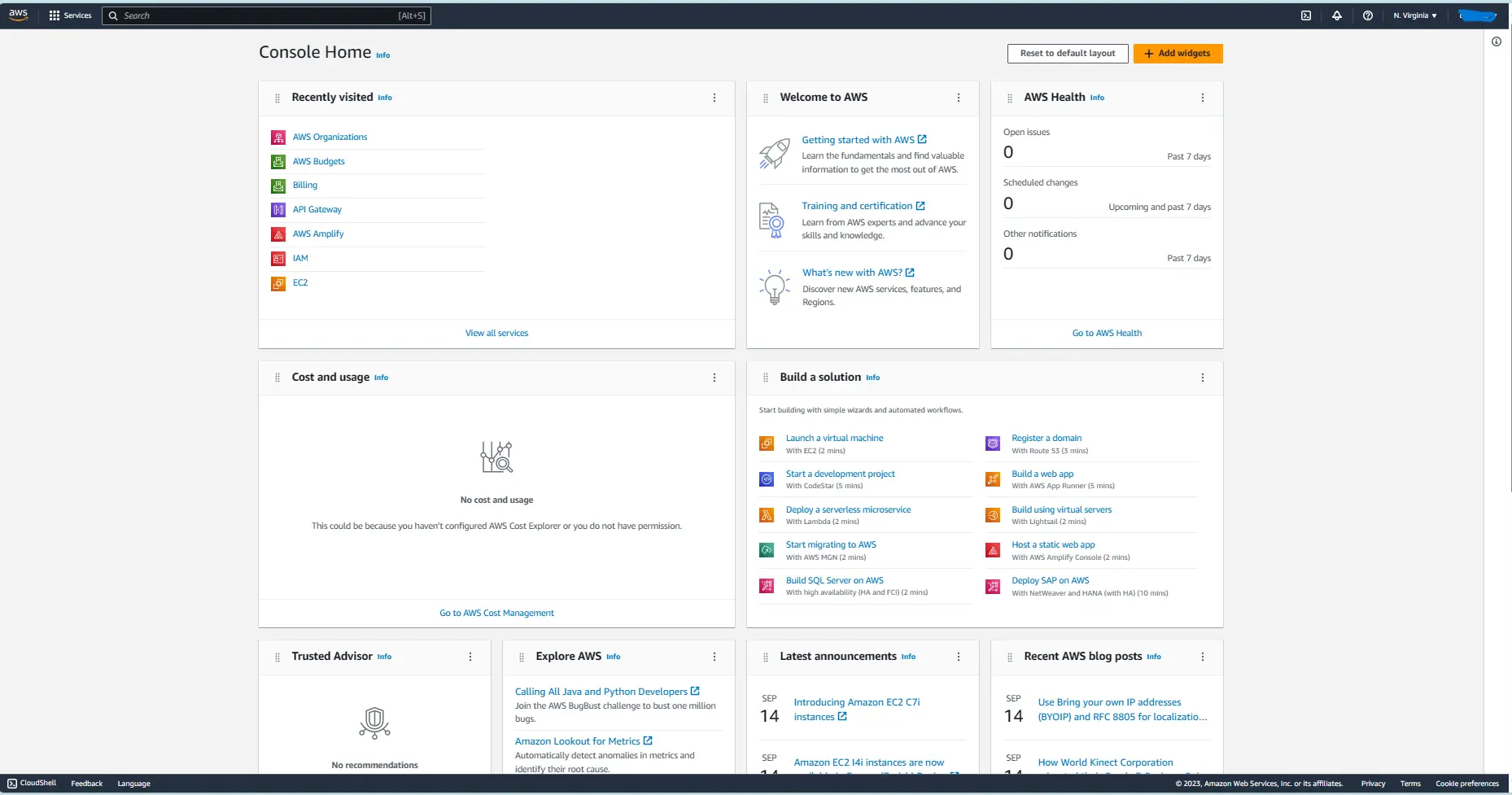What is AWS Services Console?

AWS Services Console is an essential tool for individuals and businesses that utilize Amazon Web Services (AWS) for their cloud computing needs. It provides a user-friendly web interface that allows users to easily manage and utilize various AWS services. With AWS Console, users can launch instances, provision resources, and work with Amazon S3 buckets, among other tasks. This web application streamlines the process of managing and utilizing AWS services, making it convenient and efficient for users to access and leverage the power of the cloud.
Unlocking the AWS Services Console: Step-by-Step Guide
To unlock the AWS Console, you will first need to create an AWS account if you don't already have one. This can be done by visiting the AWS website and following the signup process.
Once you have your account, you will also need a web browser installed on your computer. Any modern web browser such as Google Chrome, Mozilla Firefox, or Safari and perform the following:
- Simply open your preferred web browser and navigate to the AWS Console login page.
Enter your AWS account credentials here https://aws.amazon.com/console/ and you will be granted access to the AWS Console, where you can manage your AWS resources and services.

- Now Create a new account if you know you dont have any through the link above
- Sign in , then enter your email address and password to now access your AWS services from your console.
AWS Services Console after login features

The AWS Console is a powerful tool that provides users with a comprehensive dashboard to manage and control their AWS services and resources. Once logged in, users can access a range of features within the console that allow them to monitor and manage their cloud infrastructure.
Some key features include the ability to create and configure EC2 instances, manage storage resources such as S3 buckets, set up and manage databases using services like RDS, and monitor the performance and health of their resources through CloudWatch. Additionally, users can also manage security settings, set up networking configurations, and handle billing and cost management within the AWS Console. Overall, the AWS Console offers a centralized hub for users to access and utilize the extensive range of AWS services and capabilities.
Benefits
Using the AWS Console provides a variety of benefits for businesses and individuals alike. Firstly, it offers an easy-to-use interface that allows users to manage and control their AWS services efficiently. The console provides a centralized platform where users can access and manage various AWS resources, such as storage, databases, networking, and computing power.
- Easy navigation and user-friendly interface
- Convenient management of AWS resources
- Simplified deployment and monitoring processes
Additionally, the console offers comprehensive monitoring and alerting features, enabling users to track the performance and health of their resources. It also allows for easy scalability, as users can quickly adjust their resource allocation based on their needs. Overall, the AWS Console simplifies the management and operation of AWS services, saving time and effort for users while ensuring optimal performance and flexibility.
Common cases
The AWS Console is a web-based interface that allows users to easily manage and access various services provided by Amazon Web Services (AWS). It is used by businesses and individuals for a wide range of purposes. Some of the common use cases for the AWS Console include deploying and managing virtual servers through Amazon EC2, setting up and managing databases through Amazon RDS, creating and configuring storage resources through Amazon S3, and monitoring and managing application performance through Amazon CloudWatch.
The console provides a user-friendly interface with intuitive controls and options, making it easier for users to interact with and manage their AWS resources efficiently. Whether it's deploying new applications, scaling resources, or monitoring performance, the AWS Console offers a convenient and comprehensive solution for managing AWS services.
Tips and best practices
The AWS Console is an essential tool for managing and accessing various services provided by Amazon Web Services. To make the most out of using the AWS Console, it is important to follow certain tips and best practices
Firstly, it is recommended to enable multi-factor authentication (MFA) to add an extra layer of security to your AWS account. Additionally, it is crucial to regularly review and audit your AWS resources to optimize costs and ensure efficient usage. Utilizing AWS Identity and Access Management (IAM) is also advisable to manage user access and permissions effectively.
Lastly, staying updated with the latest AWS announcements and features will help you make the most of the AWS Console and stay ahead in your cloud computing journey.
Conclusion
The AWS Console is a powerful platform that offers a wide range of features and tools for managing, monitoring, and deploying resources on the AWS cloud. It provides users with a centralized interface to streamline their AWS operations and optimize their infrastructure for scalability, security, and performance.